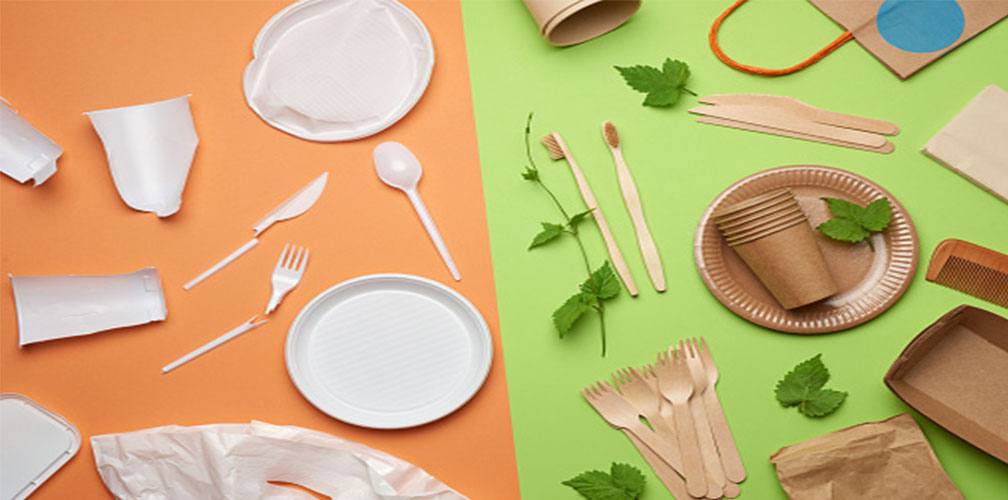Free Courses Sale ends Soon, Get It Now


Free Courses Sale ends Soon, Get It Now



Copyright infringement not intended
Context: The Bureau of Indian Standards (BIS) has announced a new standard for food serving utensils made from agricultural by-products, such as leaves, stems, and husks. The standard, IS 18267: 2023, aims to reduce plastic waste and promote sustainable development in the country.
Details
Biodegradable Utensils
About
Features
Significances
Challenges
Way Forward
Conclusion
Must Read Articles:
Bureau of Indian Standards (BIS): https://www.iasgyan.in/daily-current-affairs/bureau-of-indian-standards
|
PRACTICE QUESTION Q. Which of these statements is/are correct about biodegradable utensils? A) They can be moulded into any shape and size B) They can withstand high temperatures and liquids C) They can be eaten or digested by humans or animals D) They can be composted at home or industrial facilities How many of the above statements are correct? A) Only 1 B) Only 2 C) Only 3 D) All Answer: C Explanation: Biodegradable utensils are not edible or digestible by humans or animals. Some biodegradable utensils may be made from edible materials such as pasta or rice, but they are not meant to be consumed as food. Biodegradable utensils should be disposed of properly in compost bins or facilities. |
https://pib.gov.in/PressReleasePage.aspx?PRID=1934624
© 2024 iasgyan. All right reserved